Some of our regular readers may ask: why is Digital
Outback Photo now reviewing Digicams? The simple answer is that we
actually do not care that much about the cameras as about the results.
But because
we care about the results from the content and technical side we look
only into cameras that we feel are up to the job. Please read our short
essay "The
Digital Camera and the Photographer". We wrote this
essay when we started using the Canon 300D Digital Rebel. You probably
see that most of the ideas also relate to the Sony F828.
The Sony F828 is the first Sony camera that seems to challenge traditional
digital SLRs and at its price point of about $999 the main contender
is the Canon 300D (Nikon's D70 is on its way). We found this camera
so important that we bought it to check its merits and failures.
We never really approach a camera as a test object. The goal is to
get the best images we are able to produce out of any camera. If we
fail this is often our fault. But we also share what we think is in
our way to produce the results we like. This may or may not be a problem
for you.
Expectations
Every review starts with expectations and measures
the review object against these criteria. We use SLRs for 30 years
and digital SLRs for
nearly 4 years. We measure the Sony F828 against the entry level of
digital SLRs and this is at this time the Canon 300D. This means if
you come from a digicam background your judgment may differ.
Sony F828 is Cool
The Sony F828 is very nicely built (Sony Style), is very different
from other cameras and feels well. Also the Zeiss lens adds to the
coolness factor. But this lens has to be excellent to resolve
the tiny 2.7 micron pixels in the 8MP four color 11mm wide CCD.
F828 Electronic Viewfinder (EVF)
To get us right, we believe that electronic viewfinders with the live
preview are the future for digital cameras. But the current crop of
EVFs are hardly close to that goal. The viewfinder is the composition
device and we love
MF cameras
just
for that reason. We have problems using this viewfinder (Bettina was
shocked:
"How should I do critical compositions?"). Also the low refresh
rate of the viewfinder image does not allow to follow movements easily
(e.g. emotions in faces, be it people of wildlife).
(Not) Using Raw
The F828 is the first Sony camera that also supports
raw format. Our readers know that we use raw with all cameras. But
Sony managed to create a camera that makes raw not useful. When you
shoot raw the you could get 1 shot probably every 10-15 seconds as
the F828 blocks to write the raw files to the CF card (we don't care
about Memorysticks). Even if this speed issue would be solved using
raw with the F828 would not be rosy:
- The poor functionality of Sony raw converter demonstrates that
Sony does not really take raw seriously. Otherwise they would build
software that would let their raw format shine and we are sure that
Sony could produce such a software if they wanted.
- Raw converter only saves in 8 bit
- Raw converter is slooow!
Ok, now some Sony fans have found that we just want to bash Sony.
This is not the case as we like the idea that digicams challenge digital
SLRs and this will happen anyway.
Actually even if this is a bad start it is just the beginning. We
will use the F828 only in JPG and try to get the best out of it. The
points we mentioned do not mean that a camera cannot produce stunning
photos. We just feel that digicams need way better EVFs and also excellent
support for raw.
Canon 300D vs. Sony F828
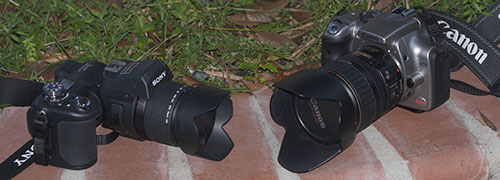
We spent the whole day to photograph with the Canon
300D and F828 side by side. The F828 was as is and the
Canon 300D with the 28-135mm f/3.5-5.6 (a medium quality lens from
Canon). The value of the F828 was about $1000 and the Canon combo about
$1300 (if you buy the 300D kit).
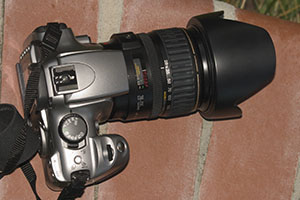 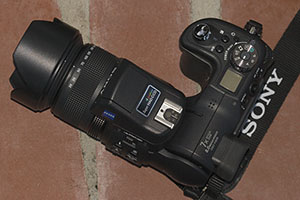
The Sony F828is lighter and more compact
than the Canon 300D with the 28-135mm lens.
Noise
The following shots are a 100% pixel
crop from the following scene:
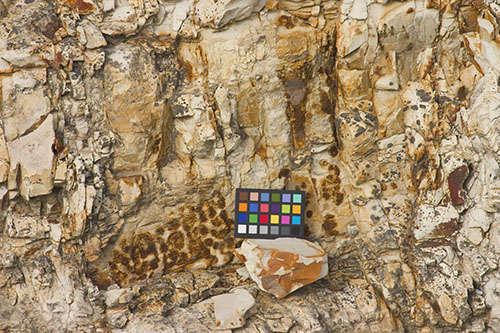
Note: The 300D raw file
was white balanced in Adobe Camera Raw 2.0. Changing white balance
in JPG files is not as convenient. But we have to say that the subjective
colors from the F828 were very good. This test is only about noise
and not comparing colors.
Here are our standard camera settings
for the Sony F828:
- Color: real
- Saturation: normal
- Contrast: normal
- Sharpness: minus
Sony F828 |
Canon 300D |
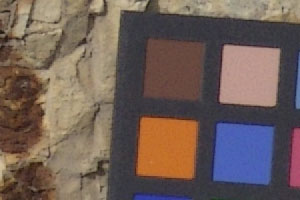
ISO 64 |
|
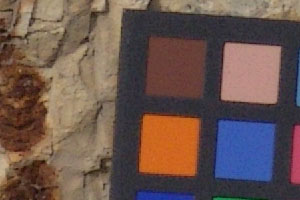
ISO 100 |
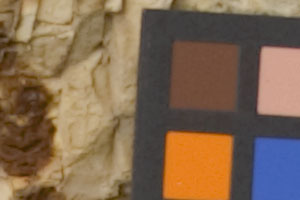
ISO 100 |
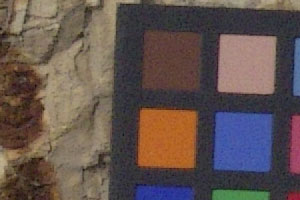
ISO 200 |
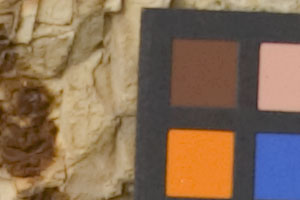
ISO 200 |
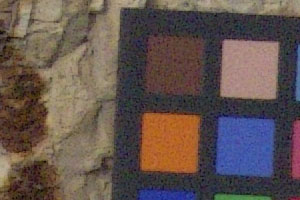
ISO 400 |

ISO 400 |
There is no doubt that the Canon 300D
is the clear winner in terms of noise. But you can also see that the
F828 produces a lot of details.
Note: Up to ISO 200
this noise will hardly be visible in reasonable sized prints (e.g.
11x14"). Also cameras with smaller sensors and shorter focal length
produce more DOF:
Pro: Lower f-stops produce more DOF
Con: Harder to blur
backgrounds for portrait and bird shots
Then there are also tools like Noise
Ninja (read
our review) that help
remove some of this noise. Here is a quick example:

David
Elias at San Gregorio (his CDs are great)
This is an ISO 400 shot and we used noise
Ninja to reduce the noise:
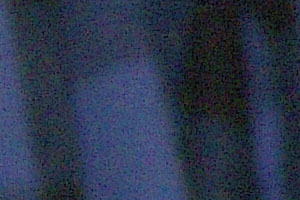 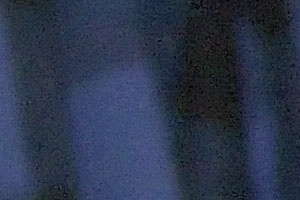
before and after Noise Ninja
Chromatic Aberration
The main issue with images from the F828
is actually chromatic aberration (CA). At least with all shots at 200mm
and at more contrasty scenes we get a lot CA (the contrast was not
even extreme). This CA is also easily visible to the naked eye in prints
at 11x14".

Pigeon Point Light House (CA, Pacific Coast)
here are 2 crops that show strong CA:
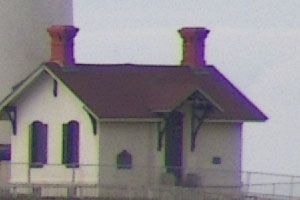 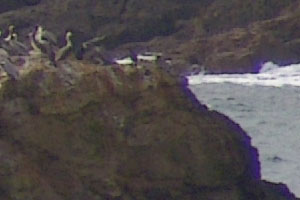
The same shot from the Canon 300D with
the 28-135mm lens showed also CA but by no means at this level and
also only in the corners.
Currently in the news groups you find
many recipes how to remove the F828 CA. We are sure that it is hard
to remove most of the CA (e.g. using Photoshop Hue/Saturation on selected
colors)
and probably impossible to remove all CA in postprocessing.
In scenes with lower contrast (we try
to work in low contrast as much as possible anyway as digital cameras
are today limited in capturing high dynamic range) the F828 can produce
great results:

Sea Lions at Santa Cruz Pier
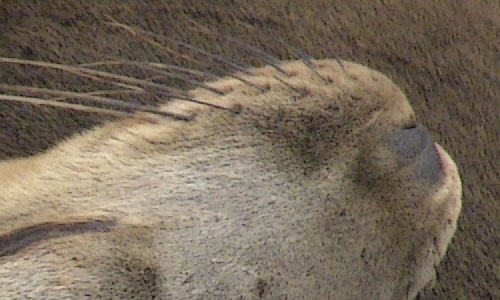
ISO 200 at 100% pixels
Colors & Resolution
So far we find the colors very good and
the auto white balance does a pretty good job. Also the resolution
is clearly good.
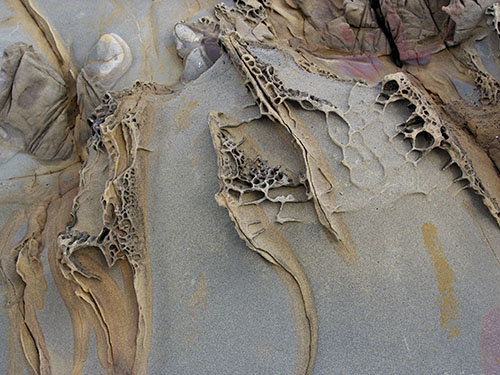
Earth Frame at Pebble Beach CA (not the golf course)
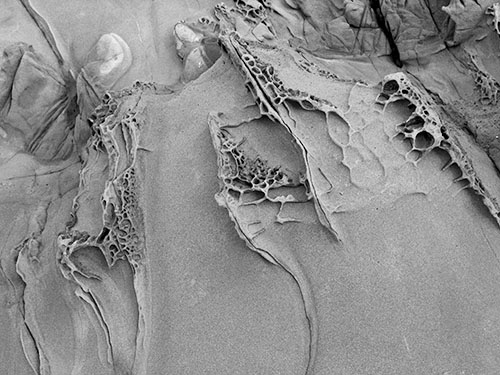
B&W conversion
In lower contrast the F828 pictures show
less CA. Then the F828 can produce images that can easily be part of
our portfolios. Actually the greater depth of field (DOF) of the F828
(compared to 35mm digital SLR designs) helps to create sharper images.
Many F828 photographers will prove that
the photographer matters and the camera is just a tool.
The Zeiss Lens and Sharpness
We think that the Zeiss lens is good
in terms of detail and delivers sharper results than the 28-135mm lens
we used from Canon. It is known that the 28-135mm lens is soft especially
at the 135mm end. Why did we not use our L glass lenses? With the top
Canon L lenses is a huge price difference to the F828. If the
CA is tamed by either low contrast scenes or some Photoshop post processing
the F828 can deliver results that rival most of today's digital SLRs.
Miscellaneous The live
histogram is a great help to get a proper exposure for the JPGs. The
speed and framing burst modes are nice features. Speed burst allow
you to cature nearly 3 frames per second.
First Summary
For us the CA is the main issue we need
to deal with if we want to get quality results from the F828 camera.
We also realized that the viewfinder gives us a hard time for composing
images. The viewfinder is also very busy with all the symbols. Could
be better organized at the bottom or to the side of the image. |